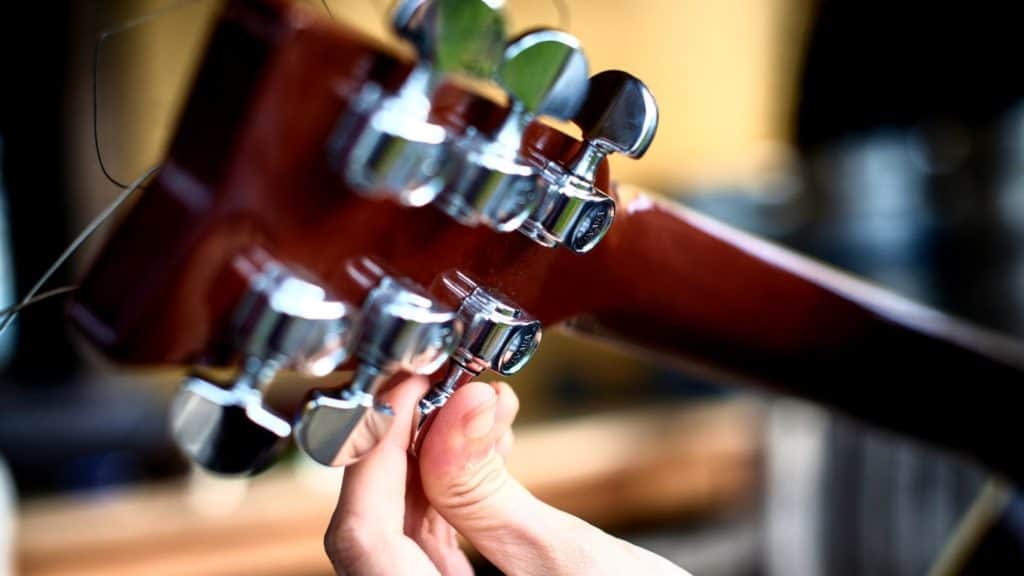In music, there are two common meanings for tuning: Tuning practice, the act of tuning an instrument or voice. Tuning systems, the various systems of pitches used to tune an instrument, and their theoretical bases.
Tuning a guitar is the process of adjusting the strings of the instrument to create the desired pitch.
This can be done by using a variety of methods, including electronic tuners, pitch pipes, and tuning forks. The goal is to achieve a consistent sound across all strings, which allows for proper chords and melodies to be played.

What guitar tunings are there?
Depending on the style of music being performed, different guitar tunings may be used. For example, country music often employs an “open G” tuning, while metal music may use “drop D.”
There are many different tunings that can be used, and it is ultimately up to the player to decide which one sounds best for the music they are creating.
What is the most popular guitar tuning?
The most popular guitar tuning is standard E tuning. This tuning is used for a wide variety of genres, including rock, pop, and blues and it’s tuned to EADGBE.
It’s the easiest tuning to learn to play as almost all your favorite songs will be in this tuning.
Plus, all the lessons on learning to solo will be in this tuning as it’s very easy to play in “box patterns” when your guitar is tuned this way.
How do you tune a guitar?
There are a few different ways to tune a guitar, but the most common method is to use an electronic tuner. This device will emit a pitch that can be matched by the strings of the guitar.
Once the string is in tune, the tuner will usually display a green light, indicating that it is in the correct position.
It is also possible to tune a guitar without an electronic tuner, though this method is generally considered to be more difficult.
- One way to do this is by using a pitch pipe, which will give the player a starting point for each string.
- Another option is to use a tuning fork, which can be struck and then placed against the guitar strings. The vibration of the fork will cause the string to vibrate and produce a sound. By listening closely, it is possible to match the desired pitch.
No matter which method is used, it is important to take care when tuning a guitar. Too much tension on the strings can cause them to break, and this can be a costly repair.
It is also worth noting that guitars may go out of tune more frequently in hot or humid weather. This is due to the expansion and contraction of the wood due to changes in temperature and moisture.
Conclusion
When tuning a guitar, it is important to be patient and take your time. Rushing the process can lead to mistakes, and an out-of-tune guitar will not sound good no matter how well it is played.
I'm Joost Nusselder, the founder of Neaera and a content marketer, dad, and love trying out new equipment with guitar at the heart of my passion, and together with my team, I've been creating in-depth blog articles since 2020 to help loyal readers with recording and guitar tips.

